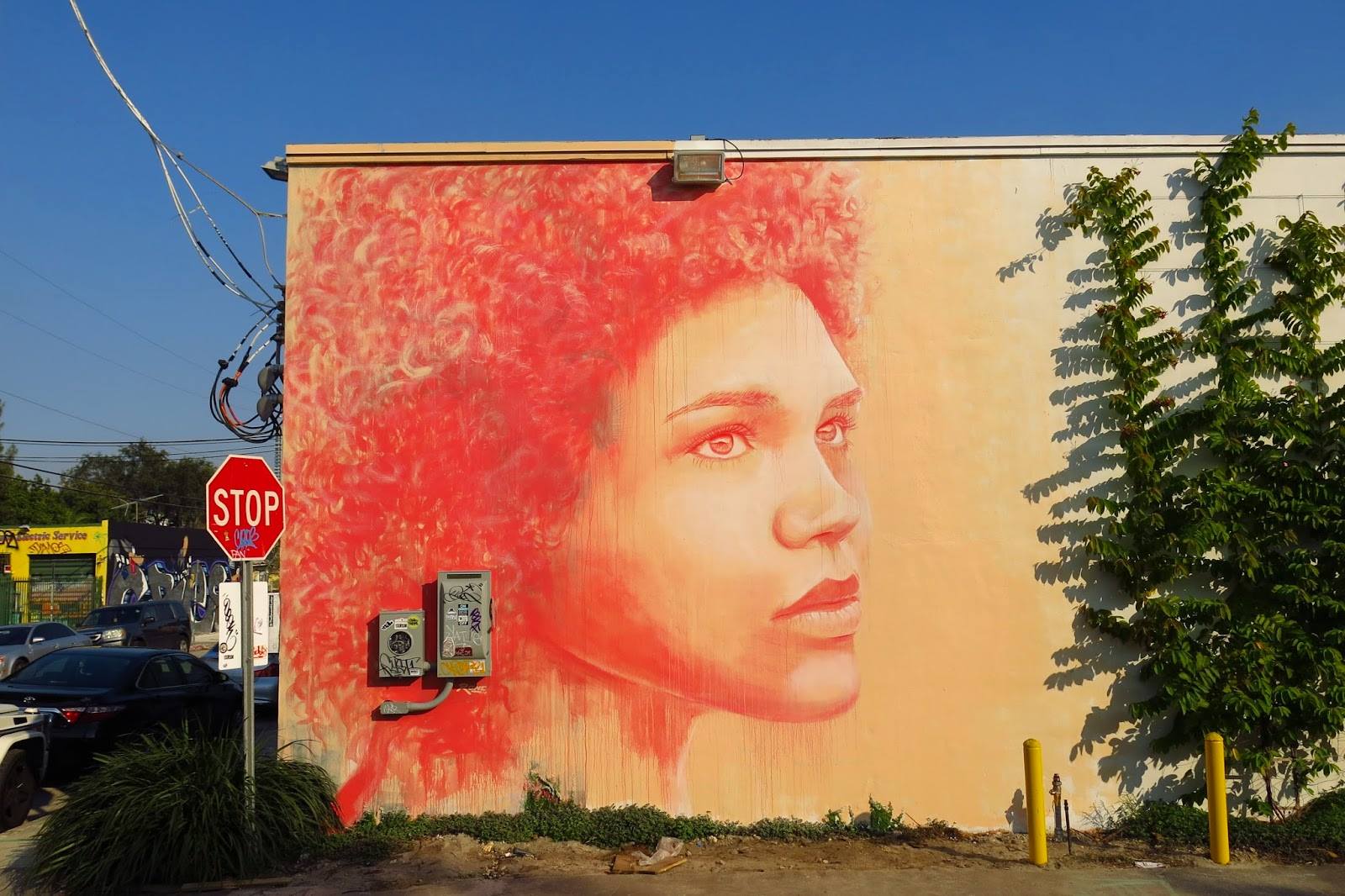Famous for his sumptuous paintings of glamorous women, in particular an often recurring image of his so-called Jane Doe, Rone’s work attempts to locate the friction point between beauty and decay, the lavish and despoiled, creating an iconic form of urban art with a strongly emotional bent. Producing many of his early works either through a process of stenciling or screen-printing however, like fellow Everfresh member Meggs, Rone’s movement toward a more freehand style of practice has enabled a certain amount of openness and looseness to seep into his images, a rawness which can perhaps be seen to have enhanced the affective quality they contained. A key individual in the Melbourne street art scene then, Rone’s images have not only appeared all over his adopted city itself but have increasingly began to appear all around the world too, his trademark figures, his heroic, alluring, cinematic icons manifesting themselves in ever larger, more elaborate and emotive forms.
Rone’s work swiftly become an unmistakable part of the Melburnian cityscape, his images suffusing the landscape at an almost unimaginable rate. Using their “calming beauty”, their innate contrast to the walls that they grace, they thus fuse its dirt with decorativeness to form an ephemeral elegance, a transient beauty amidst the chaos of the street.
I was able to send some questions to RONE, and this is what he had to say:
Could you tell us a little about yourself?
I’m a painter from Melbourne Australia.
How or when did you start doing street art?
In 2001.
Do you have a formal arts education?
I studied graphic arts but I have been painting on the street since 2001. I didn’t have my first exhibition until 2011 so it was a very slow progress to where I am today.
Are there any artists who particularly inspire you?
I’m inspired by many of my peers, such as the people in Everfresh studio or other great artist I’ve met on tour such as Askew One. Not just for the styles but for their work ethic or the way the go about their art.
Do you have any favorite surfaces?
Surfaces with character. Broken, faded, cracked…
 What was your most memorable “street art” experience?
What was your most memorable “street art” experience?
We drove past this village in Vanuatu (pictured above) last week and I asked the community leaders if we could paint their community center. The next day we were introduced to Joanna who I photographed in the village. We painted the whole building in one day and most of the villagers came to watch and help out. Once we had finished the elder asked us to stand in a line to formally thank us for the wall and wish us a safe journey home. Then everyone watching from the village lined up to shake our hands. It was a very moving moment.
 What percentage of you time is devoted to art?
What percentage of you time is devoted to art?
99%.
Do you have a message in your art?
My work talks about the fragility of the medium and the way I see beauty in decay.
What are your thoughts on the way the internet is influencing the artworld?
There are many things to talk about with this subject, but one I have noticed is that Style is now globalized whereas, you used to be about to spot where a writer was from by the way they painted.
Street art is still considered vandalism, how is it for you to go out and paint in the street? Did you ever have any problems with the law?
I had a few issues in the past but now I’m lucky enough to have people just ask me to paint their walls.
 Which countries have you visited to paint so far and where did you like it best?
Which countries have you visited to paint so far and where did you like it best?
There is a lot on my list now – USA, Taiwan, Malaysia, Mexico, UK, France, Germany, Japan, New Zealand Jamaica, Dominican Republic – but I still have had the best time painting in Vanuatu.
 Some street artists find it hard to paint in the USA (restrictions…) than in other country. My question is, do you share the same sentiment, and why?
Some street artists find it hard to paint in the USA (restrictions…) than in other country. My question is, do you share the same sentiment, and why?
I don’t have any problems, but as I no longer paint illegally, I don’t think I can speak about this issue.
What is the best advice you have ever had about how to be creative?
I think that working with other people makes you more creative as it gets you out of your comfort zone and makes you try something new.
What is your favorite piece of art you created and why?
I’m not sure, most things I do I love at the time, but as time passes I look at what I could have done better. A recent favourite would be the Broken Glass Theory in Geelong (pictured below).
 What do you do when you are not creating art?
What do you do when you are not creating art?
Answer emails- ha.
What are your plans in the near future?
I’m heading back to the UK & USA early this year.
Any words of advice for aspiring new artists?
Don’t paint over anyone’s work, no matter what you think of it.
I thank you for taking the time to talk to us at SAUS. All the Best!
RONE
www.r-o-n-e.com
www.instagram.com/r_o_n_e
www.everfreshstudio.com














Extraordinary work.